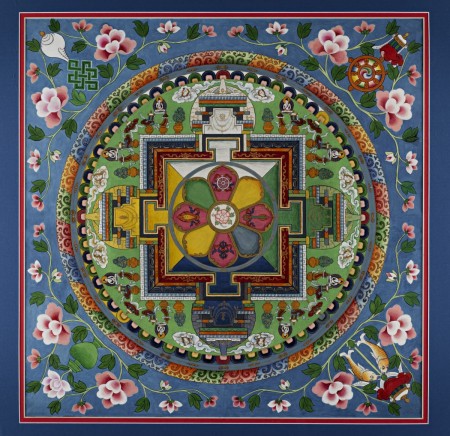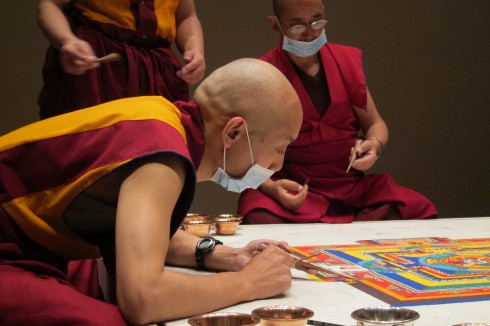India, Dharamsala, September 1991; painting on cloth; image: 22 3/4 x 22 3/4 in., framed: 29 3/4 x 29 1/2 in.; Jacques Marchais Museum of Tibetan Art, 92.11.1025.
One of the best-known forms of Tibetan spiritual practice is the so-called sand mandala. Actually constructed of powdered minerals colored with vivid dyes, this ephemeral type of mandala originated within monasteries to accompany special rituals or events. When the ritual is complete, the makers dissolve the mandala, brushing away the materials and offering them as a blessing to beings throughout the universe. Since the Tibetan diaspora beginning in the late 1950s, sand mandalas are now made to mark auspicious events throughout the world, such as an important teaching by the Dalai Lama or an exhibition of Buddhist art. To celebrate the opening of Embodying Compassion in Buddhist Art, a Chenrezig mandala was created, and the ritual specialist, Khenpo Choephel shown here, participated.





